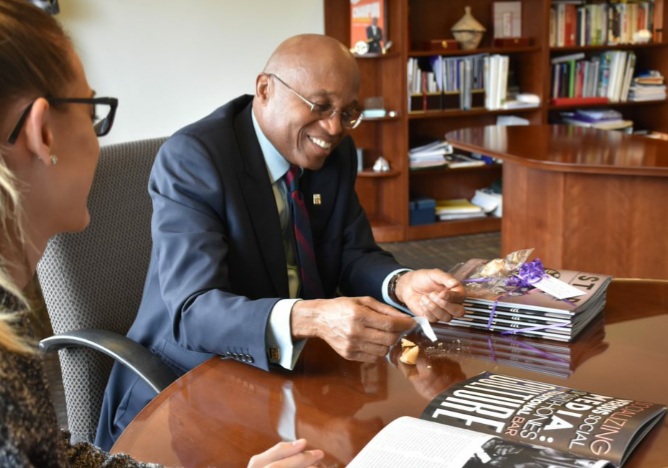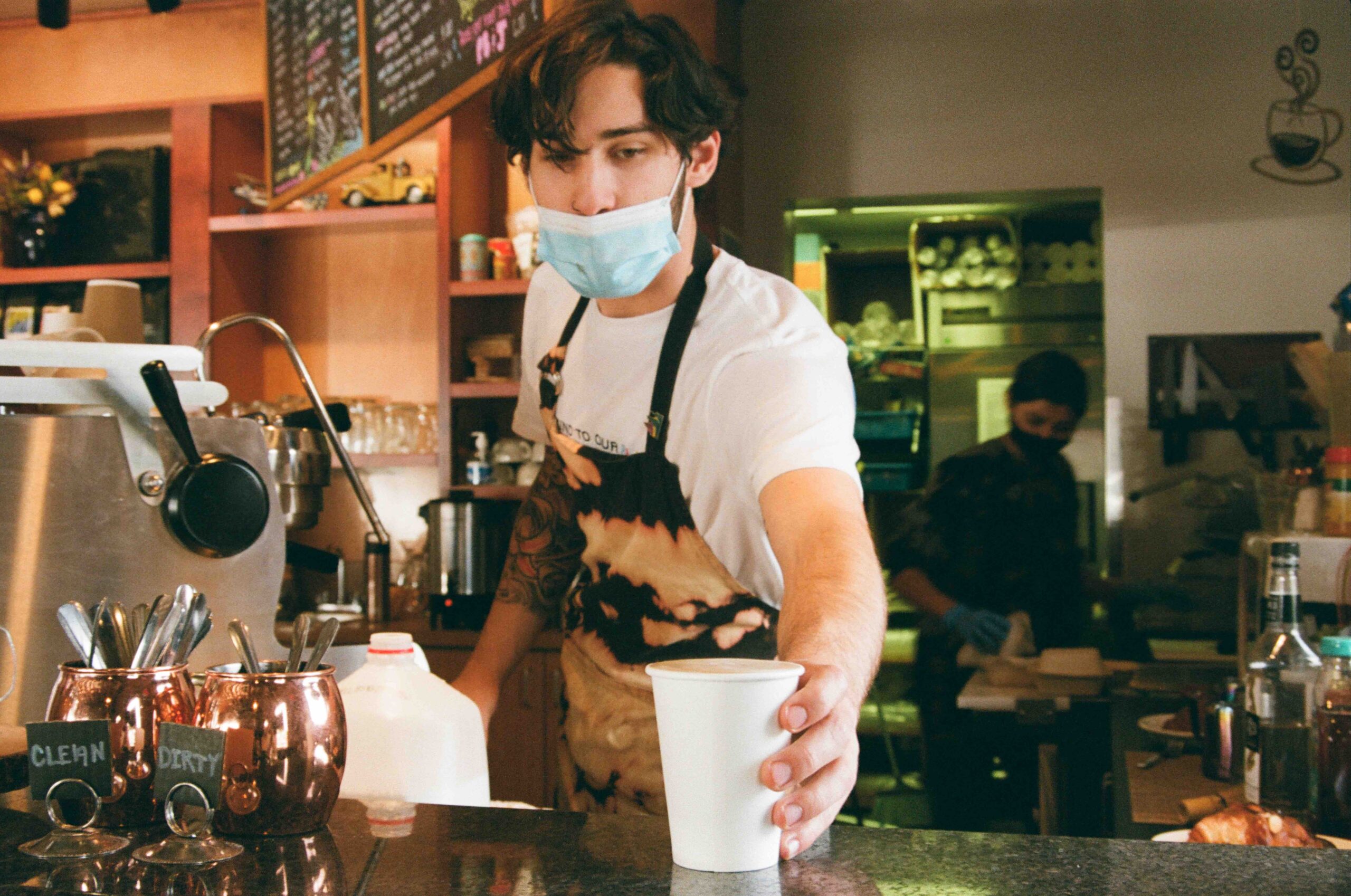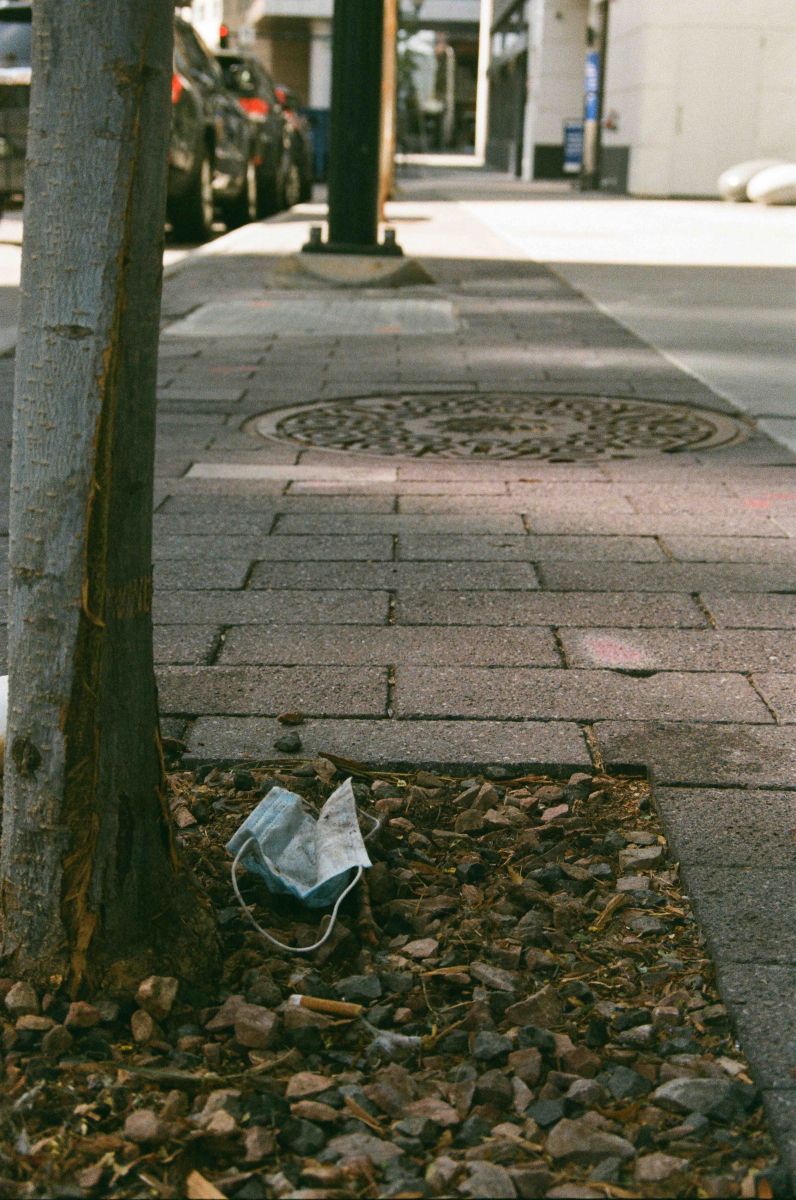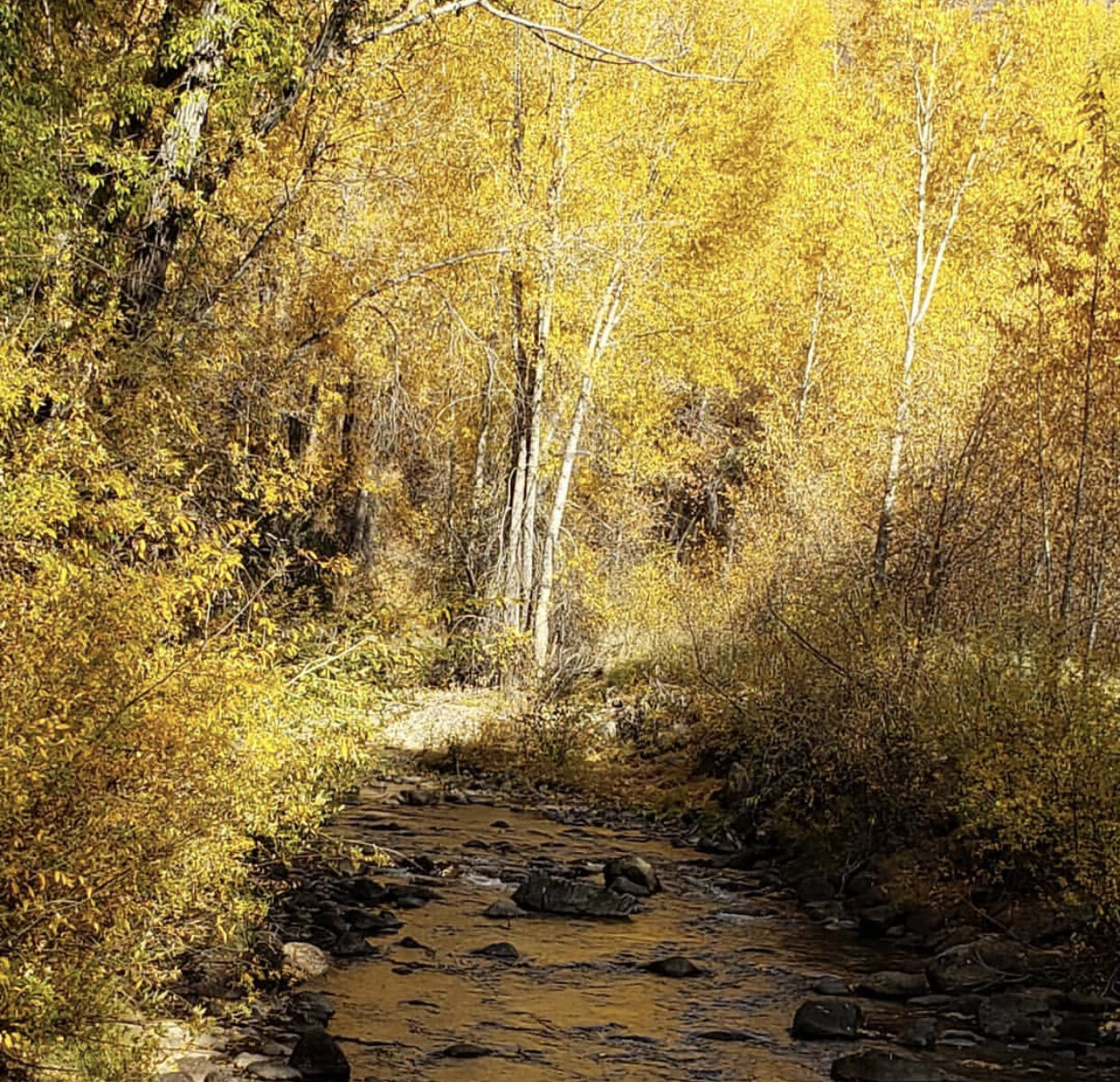On the morning of August 29, in an English Composition class at the Community College of Denver, students were tasked with answering a simple question.
“What is the most important thing you’ve read.”
Kevin Bates, a 38-year-old student’s answer was one that stood out. “The beginning of everything” by Andrea Buchanan was his answer. The class would soon understand why his enjoyment was a mixture of empathy and interest.
On September 10th, 2000, Kevin was in a car accident. He was called lucky for coming out of it with a few broken bones. That was supposed to be the end of it. However, at the end of October 2017, Kevin started to have strong headaches.
“When I say headaches, that doesn't really explain exactly how it felt,” Kevin said. “It almost felt like somebody opened up my head and put a bunch of fireworks in and closed it back up. That’s what it felt like.”
At first, they would come and go. He convinced himself that it was nothing. “I thought it was a hangover and I told myself I was getting too old to be drinking,” Kevin said while laughing. When the pain persisted, he thought he was just tired from working all the time and just needed to rest. But, it got to a point where the headaches would get so bad that only laying down could make him feel better.
It was January 2018, and Kevin was out of work, still experiencing severe migraines that required him to lay down to ease the pain. At this point, he knew something had to be wrong. After talking to his mother, he finally decided to go to a doctor.
After being sent to a neurologist for some scans, Kevin was sent home because everything looked normal. But everything did not feel normal.
Walking, standing, and other small tasks became difficult, his balance suffered. Kevin started stacking ER visits, one after another, resulting in the hospital thinking he was just another “junkie looking for pills to get high.”
On a cold January night, after spending a couple of hours in the waiting room of an ER, Kevin started to lose his patience. When he approached the information desk, he was confronted by a less than helpful receptionist. He asked how much longer before a doctor could see him, her response was “You are just here for a headache, we have people with real problems. We’ll get to you when it’s your turn.” With his headache getting worse, Kevin asked for a bed where he could wait for a doctor. His request was denied, so he decided to lay on the floor of the waiting room. When he was told that he could not do that either, the situation escalated, security was called and escorted him out of the building. That was his last ER visit.
A couple of weeks after that, Kevin met with a friend who noticed how bad he was doing. His friend was so concerned that he sent a message to Kevin’s mother, Karen. In the message, he explained that after seeing Kevin he thinks something is seriously wrong. “He told my mom: I don’t know if you know what’s going on with Kevin, but I am pretty sure he’s dying,” he said.
After receiving the troubling message, Karen, who lived in Kansas, decided to fly to Denver with her sister to see her son. “I remember opening the door and seeing them both starting to cry when they saw me,” Kevin said. “At this point, I hadn't been able to eat, do dishes, or clean. If something fell over, that’s where it would stay. The pressure of bending down made it worse.”
After seeing her son’s condition, Karen decided to take him with her back to Kansas City.
Once in Kansas, Kevin was taken to the ER where more tests were ran. For one of the tests, he was asked to name as many animals as he could in 30 seconds, he came up with 2 names. He was then subjected to a hand tapping coordination test. The point was to sit with both hands on his lap and alternatively tap the hand still on his lap with the other hand. Kevin failed.
After more exams, it was concluded that Kevin was suffering from a cerebrospinal fluid (CSF) leak. Another discovery was that he suffered from frontotemporal dementia, which was causing him to be forgetful most of the time. “At first, it was just keys, then it was more important things,” Kevin said.
Kevin was told that he had the brain capacity of a 99-year-old person. Once again, he was called lucky. This time, for not having a stroke before being diagnosed. The doctors told Karen that had she not brought her son in that day, he probably would have been rushed in for a stroke in the next 36 hours.
Being diagnosed was a relief for Kevin and his family. That meant effective treatment. Or at least, that’s what they thought.
The doctors decided the best way to treat him would be epidural blood patches on his spinal cord. After the first blood patch, Kevin felt relieved. However, that only lasted about a day before the headaches were back.
Back in the hospital, Kevin received a second blood patch, then a third, and a fourth. After getting the fifth blood patch, Kevin felt better for a week, which was a significant improvement
Thinking everything was better, he decided to come back to Denver.
On the day of his flight back, he started to feel the headaches come back. Met with disappointment, frustration, and mostly denial, Kevin decided to board his plane and just live with the pain.
Back in Denver, Kevin’s pain was becoming unbearable. As he made his way to baggage claim, his headache started to get worse. He could no longer walk or stand. In the middle of a crowded terminal, Kevin laid on the floor, until a concerned bystander called an ambulance.
Even then, he refused to admit his condition to the paramedics. He made them believe he was just having a bad migraine that would go away. He was still taken to the hospital. “I didn’t know what was happening,” Kevin said. “But I wanted to believe I was getting better because I had done all this treatment. I told myself it was just side effects.”
When he was still experiencing headaches two days later, Kevin realized it was not a side effect. After talking to his mother, they were able to contact his doctor here in Denver, to ask for another blood patch injection. However, Kevin was told that it would have to be the last. The main concern was that making more than six injections to his spine could create some damage to his spinal cord.
Just like the first five injections, the sixth one did not have permanent effects. The headaches returned.
At this point, Kevin’s Dementia was getting worst. He went back to Kansas to be surrounded by family. For the most part, he did not remember anything happening. “Lucky for me, the dementia allowed me to not worry about that,”
Kevin said. “I couldn’t remember long enough that they said there was nothing more they could do to fix me.” However, his family will never forget, the good and the bad days.
Although the hospital sent her son home to die, Karen did not give up. She spent most of her time researching CSF leak and ways to beat it.
About three months into her research, she found a video about a doctor named Wouter Ingmar Schievink, a neurological surgeon known for his expertise in brain and spinal cord vascular disorders.
In June 2018, Karen contacted Dr. Wouter’s office and sent them Kevin’s medical records upon his assistant’s request. It was a big relief that she answered her phone a day later, to find that it was Dr. Wouter calling. He told her he knew why the blood patches have not been working, and knew how to repair the damage to her son’s brain. All they had to do was travel to Beverly Hills, California.
Since his headaches required him to stay horizontal, Kevin would have a hard time sitting for the duration of a flight. Instead, they opted for the train, where he could get some room to lay down during the trip.
Once in California, they were able to get an appointment for Friday, June 29, 2018. Dr. Wouter believed that the leak in Kevin’s brain had been active for so long that his body developed a way to get rid of the misplaced fluid, his brain was no longer floating. Instead, it was resting on the back of his head, creating the massive headaches. Before the appointment, Kevin and Karen were told that there were only two options: the damage could be on the right side or the left side of his body. To find out, they had to perform a CT scan.
After getting the first side of his body scanned on Friday, it was with disappointment that Kevin and his mother were sent home.The scan yielded no results, they would have to go back on Monday to get his other side scanned.
They both knew that this was the last chance for Kevin to get the right treatment. They spent their weekend hopeful but scared.
“I remember having lunch with my mom and my sister on that Saturday,” Kevin said. “They were having a good time. But I was just watching not saying anything. My mom saw and asked if I was alright. Out of nowhere, l asked am I going to get better.”
At that time, his pain was so unbearable that even the Dementia did not get Kevin’s mind off what was happening.
On Monday, July 2nd, Dr. Wouter was able to find the origin of the leak and Kevin was rushed to surgery. He and his mother were incredibly relieved. Although the expected recovery time from his surgery was 36 hours, he started to get certain functions back within 12 hours.
“Had they not found it, I don't know how much longer I could have held on without looking for other types of exit.” Kevin later admitted.
During the first two days after surgery, Kevin’s brain was working very hard to get back to where it needed to be. The extra activity caused more headaches and lack of sleep. Five days later, he was doing a lot better and was able to get out of the hospital.
During his recovery, Kevin thought about his life a lot and one question that kept coming back to him. Had he not made it, what legacy would he have left? This made him rethink several decisions he made in his life. One of them is not going to college.
Less than a month after his surgery, he decided to enroll in the Community College of Denver. A decision that left his mother shocked, yet, pleased.
On August 21st, 2018 Kevin sat in a classroom for the first time since graduating from high school in 1999. “I hadn’t been in a school setting for 20 years, I was nervous, but it blew me away how much fun it was,” he said.
Kevin is currently enrolled in his 3rd semester at CCD, finishing up a degree in business. Although his goal is to work in the sports field, Kevin would also like to raise awareness about what he endured. “The beginning of everything” by Andrea Buchanan helped him realize that knowing other people survived can make a big difference. “It was hard to read but it was almost like I could put my name in there,” He said.
Kevin is currently toying with the idea of writing his story someday. His goal is that someone in need of support reads it and knows not to give up because it does get better.




